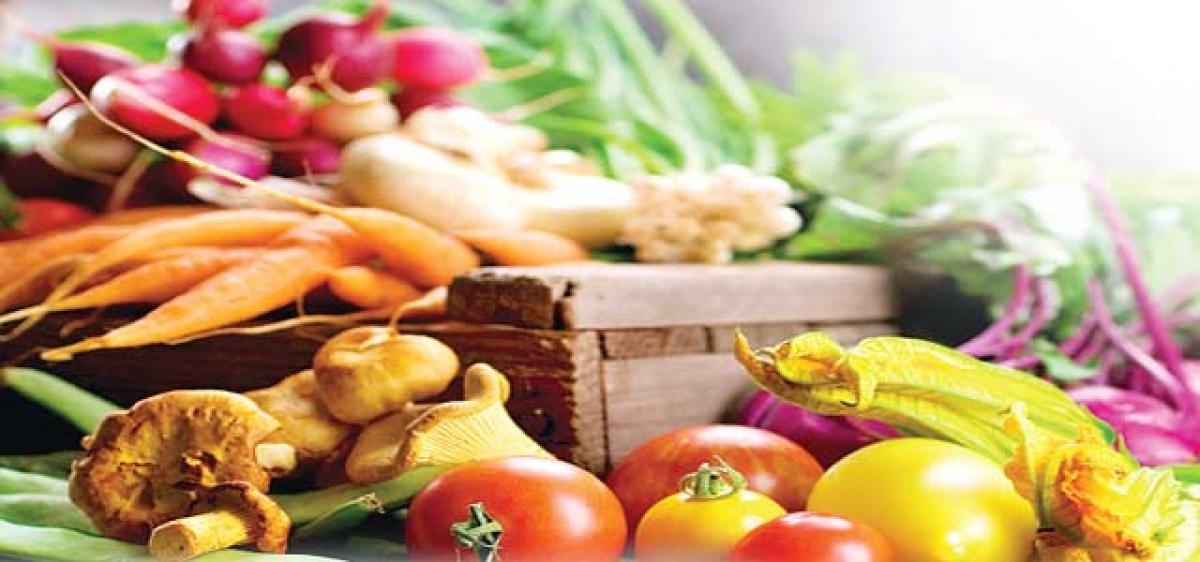Live
- BRS to celebrate ‘Deeksha Diwas’ today
- Protection Against Crop Losses: Dec 31 last date for Fasal Bima Yojna
- Over 400,000 affected by inclement weather in Sri Lanka
- Counselling for NIFT courses today
- Sports get a leg up in TG as city to host Khelo India Games 2026
- SPMVV hosts Techno-Awareness programme
- Trump tariffs not going to help America become great again: Jim Rogers
- Online faculty development programme from Dec 9
- Talk show host Kiranprabha inspires Sri City community
- Ethanol factory: BRS govt breached all green norms
Just In

December brings out the big blankets, oversized sweaters and fluffy slippers. And when the temperature drops our lethargic side comes out. So let’s boost our energy and kick off the weariness.
December brings out the big blankets, oversized sweaters and fluffy slippers. And when the temperature drops our lethargic side comes out. So let’s boost our energy and kick off the weariness.
In Indian culture, food is eaten according to seasons; like in winter, we eat foods, which create warmth and in the summer we have foods that cools the body and aid digestion.
Therefore in winter out goes watermelon, raisins, jal jeera, and buttermilk and the fresh seasonal fruits and vegetables comes in from December to February.
Munch on oranges, toss fresh amala into vegetable juices, satisfy your sweet cravings with grapes, fresh figs, dry fruits, dates, apricots, snack on guava with a little chilli powder and salt and toss pomegranate into your salad.
Incorporate salads in your meals as the vegetables are really fresh and juicy in winter. Carrots, radish, cauliflower, cabbage, flat beans, brinjal, pumpkin, turnip, spring onion, white gourd, French beans, beetroot and tomatoes, which helps to boost your antioxidants and increases immunity.
When you get a good hug from someone your mood automatically improves likewise eating sweet potato and yams makes you feel the same due to their feel good chemicals.
Cook these comfort foods by steaming, roasting, barbequing or baking your sweet potatoes, brown and purple yam.
Add white butter to increase your good fat content and automatically throwing out joint pains and creating warmth in your body.
This is the time to gorge on these rich green leafy vegetables like spinach, fenugreek, mustard leaves, dil leaves, amaranth leaves as they are a powerhouse of nutrients, which helps to boost up iron, calcium and magnesium.
Incorporate wholesome millets like bajra (pearl millet) and makkai (maize) and they automatically give you energy for a longer time.
Winter is when fresh pulses are harvested before they are dried so kick up your protein intake by adding fresh pigeon peas, green gram to name a few to your daily diet instead of the dried versions, which are available around the year.
Fresh ginger root, turmeric and green garlic are abundantly found in the market during the winter season.
They are a must in your plate as they contain phytochemicals, which prevent inflammation and joint pains that are common in the cold season.
Spice up your life in winter by including cardamom, cloves, saffron, oregano (ajwain), dried ginger and peepramul (ganthoda), which increases your immunity and keeps the common cold, cough and flu away.
Nuts, almond, pistachios, walnuts and cashew nuts provide us with healthy fats and loads of nutrients and they are great to snack on.
Did you know that 30 grams of any nut, approximately 15 almonds, 10 cashew nuts, 4 full walnuts or 25 pistachios are less than 100 calories, while 30 grams of any fried snack is about 300 calories!
Cow’s ghee, also known as liquid gold, is a brain food as it promotes memory, lubricates joints, soothes the throat and is great for the digestive system as it prevents constipation.
It’s the time when you can add eggs as they are easier to digest in the winter and the yolk adds fat that generates warmth in the body.
When the temperatures are cool; you are more sluggish, these foods automatically make you more alert, energetic and keep you warm.
They prevent colds, coughs, cold hands and feet, lubricate the joint and stops constipation. But please be careful! These foods should not be consumed in excess as they can cause nosebleeds, hemorrhoids, piles, fissures, and skin complaints like acne.
Now I’m sure that you know which foods you should be looking forward to eat this winter. So make the most of them in the months of December, January and February.

© 2024 Hyderabad Media House Limited/The Hans India. All rights reserved. Powered by hocalwire.com







